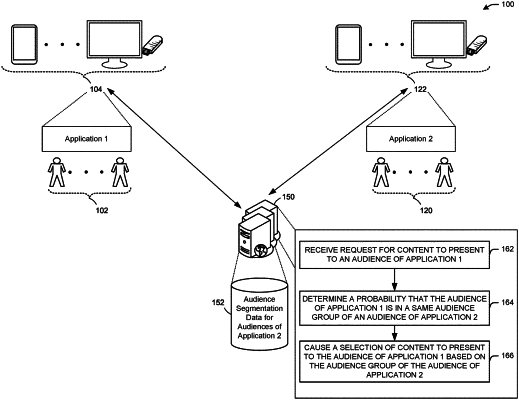| CPC H04N 21/25883 (2013.01) [H04N 21/252 (2013.01)] | 20 Claims |

|
1. A method, comprising:
receiving, by at least one processor of a first device of a first device type, a request to present first content to a user of a first audience using a first application of a second device, wherein demographic data of audiences of the first application are inaccessible to the first device;
determining, by the at least one processor, a time at which the first content is to be presented to the first audience using the second device;
determining, by the at least one processor, that the second device is to present second content to the first audience during a time period that includes the time;
determining, by the at least one processor, a second device type of the second device;
identifying, by the at least one processor, a second audience to which the second content is to be presented using a second application and devices of the first device type during the time period, wherein demographic data of audiences of the second application are accessible to the first device;
determining, by the at least one processor, a first probability that the user belongs to a first demographic group that includes users of the second audience based on the second content, the time period, and the second device type;
determining, by the at least one processor, a second probability that the user belongs to a second demographic group that includes users of the second audience based on the second content, the time period, and the second device type;
determining, by the at least one processor, that the first probability exceeds a probability threshold;
determining, by the at least one processor, that the second probability fails to exceed the probability threshold; and
causing selection, by the at least one processor, of the first content for presentation to the first audience based on the first probability exceeding the probability threshold.
|